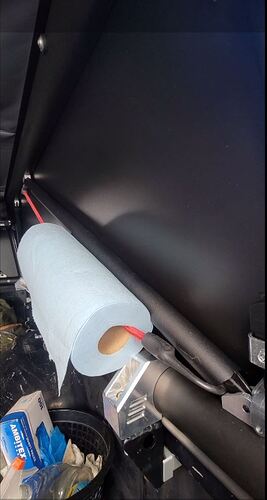Inspired by @tbacon4758 here and @MikePrado here, I installed a bungee cord paper towel holder. This would have been so great to have on my last camp. Love the simplicity of it. Will probably add a roll of toilet paper, too. (EDIT: I added TP and it was a good move) (EDIT 2: this has become one of my favorite “utilities” onboard the GFC, highly recommended!!!)
5 Likes
